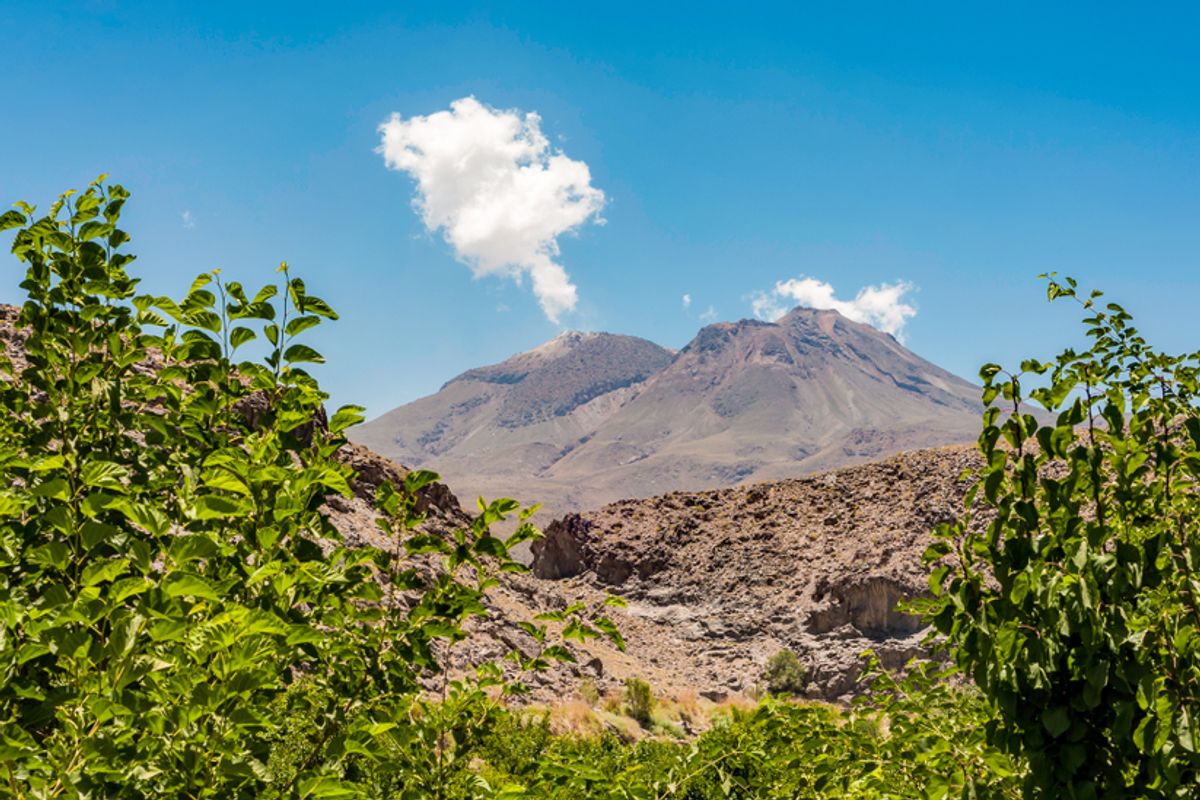A volcano that has remained silent for over 700,000 years is showing signs of waking up.
Mount Taftan is a stratovolcano situated in southeast Iran, close to the border with Pakistan. Due to its long stint of relative inactivity, it was thought to be extinct. However, there was an inkling that something was stirring last year.
National media outlets described increased levels of activity from the volcano’s vents (fumaroles), which appeared to be spouting more sulphuric gases than usual. According to some reports, smoke and ash released from the volcano could be seen 31 miles (50 kilometers) away in the city of Khash. Now, satellite images have confirmed that there are signs of increased activity — and hints that this apparently dormant volcano is rousing.
Taftan Volcano Shows Activity
Researchers writing in the journal Geophysical Research Letters “unambiguously” report unrest at Taftan, with data revealing the ground at the southeastern summit increased around 9 centimeters (3.5 inches) within a 10-month period between July 2023 and May 2024.
“Our findings reveal that Taftan is more active than previously recognized. This highlights the urgent need for a revision of the current volcano risk,” the authors wrote in the study.
Read More: Activity at Alaska’s Mount Spurr Suggests That The Volcano Is About To Erupt
A Sudden Uptick In Activity
To understand what was happening at Mount Taftan, a team of volcanologists analyzed data collected by Sentinel-1 — a satellite mission led by the European Space Agency (ESA), which provides 24-hour imagery of Earth in all weather conditions.
Using Interferometric Synthetic Aperture Radar (InSAR), the researchers were able to compare images of the volcano at different times in order to detect small differences in ground deformation. The addition of a filtering method meant the team was also able to remove a good deal of noise created by atmospheric variation, which made the timing of the beginning and end of the uplift more precise.
The 9-centimeter uplift at the summit reveals a stark uptick in activity since July 2023. In a previous study, researchers noted little movement at Mount Taftan between 2015 and 2020, reporting an uplift and subsidence of no more than 1 millimeter per year. The current study notes some — but still “negligible” — movement between January 2020 and July 2023 of approximately 1 centimeter a year.
What Is Causing The Sudden Change?
The researchers say that analysis of the data shows that the unrest wasn’t triggered by rainfall or seismic activity — there simply wasn’t enough rainfall, and no earthquake of magnitude 5 or higher occurred within 621 miles (1,000 kilometers) of Taftan at this time.
Instead, the unrest displayed “a pattern of progressive rise and fall in ground deformation” — not dissimilar to a “traveling wave.” This, they say, implies the unrest has been triggered by gradual, internal processes as opposed to a sudden, external event (like an earthquake, for example).
The source of the uplift lies somewhere between 490 and 630 meters (1,607 and 2,066 feet) below the surface. While it isn’t known exactly what is driving the recent surge of activity, the study’s authors put forward two possible scenarios: the build-up of gas or the movement of small, undetected amounts of magma, which has caused pressure to intensify and the ground to swell.
While volcanic uplift — or ground swelling — can be a sign that a volcano may erupt, the unrest described in the study does not necessarily mean an eruption is imminent. Take the example of La Fossa Caldera in Italy, which recently experienced a 6-centimeter (2.4 inches) uplift within a three-month period and did not erupt. Still, the authors highlight the need to continue monitoring the area for further activity.
“The absence of post-unrest reversed subsidence signals highlights the potential for persistent pressurization beneath the summit, suggesting that the Taftan volcano remains a hazardous area,” the authors wrote.
Read More: Kīlauea Volcano Releases Over 300-Foot Lava Fountain as it Erupts Again
Article Sources
Our writers at Discovermagazine.com use peer-reviewed studies and high-quality sources for our articles, and our editors review for scientific accuracy and editorial standards. Review the sources used below for this article:
